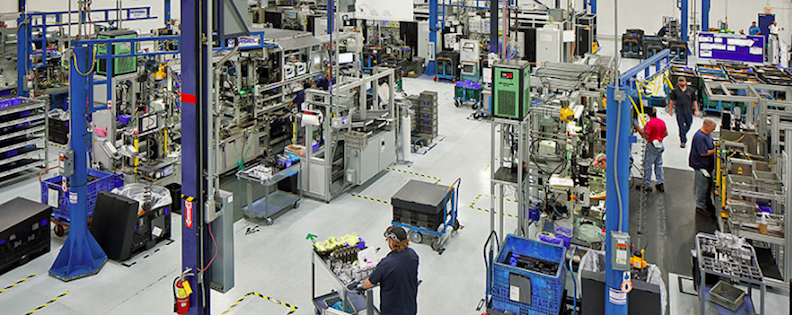
The COVID-19 pandemic has demonstrated once again that Australian manufacturing is not dead – in fact, having been forced to reinvent itself, it is just starting to find its groove. Talk of “economic sovereignty” only helps, at least in the short term.
I introduce that caveat because whilst there is now a groundswell of support to re-shore manufacturing to Australia, it remains to be seen whether Australians will be forever willing to pay for their patriotism by paying more for locally produced goods, or whether they will soon choose the cheaper overseas-made option.
I think we have short memories and will ultimately make selfish choices. I hope I am wrong.
Focus on Productivity (aka performance)
If perchance I am right, then irrespective of public sentiment in the wake of COVID-19 not only must we produce consistently superior product, but Australian manufacturers will need to continue to lift their productivity to become and remain competitive at home and on the world stage.
History has shown that our domestic market simply won’t sustain large-scale manufacturing and, even within that market, consumers will eventually buy substitutable product on price.
Your people hold the key to your productivity
So, how do we do that? I suggest that one key ingredient – if not the key ingredient – is the somewhat forgotten input to manufacturing – your people. Not just management, but every single man and woman that is a part of your team.
Check your P&L and there it is – labour, super, workers’ compensation insurance, recruitment, training and staff amenities, Fringe Benefits Tax and that horror of horrors, Payroll Tax! If it’s not the largest input when measured by cost, it goes bloody close.
So, whilst we measure constraints, throughput and downtime; whilst we talk supply chains, disruption, logistics, Industry 4.0 and DIFOT, when do we measure culture, leadership, accountability and the productivity of our key input!?
The Power of Engagement
Dr Alan McGilvray once told me that leadership drives culture and culture drives performance. That might be his material, it might not, but it made an impression on me. That he was talking about the accounting profession at the time, hardly matters. I have found it to be true no matter what industry you’re in.
There are many factors that influence Culture, and studies show that Leadership has the biggest (40%) impact on Culture
When measuring productivity, most manufacturers are focused on the hard steel of the production line, and theories of throughput and lean manufacturing.
They fail to realise that their people hold the key to productivity. It’s people who keep the machines running, monitor quality, implement new technologies and more efficient procedures, and identify and resolve issues as they arise.
But, if people are not engaged and don’t feel connected, they don’t care about the business or go out of their way to fix problems or improve processes.
They may see the problems, but they don’t say or do anything. They walk past sub-standard processes and procedures that create waste and inefficiency. Or they choose to say nothing when Bob from Maintenance takes 8 smoke breaks and 3 half-hour toilet breaks every day, or when Sally on the production line works weekends at penalty rates then calls in sick on Monday because she can’t be bothered coming in.
Bob and Sally are also the ones who are happy to let things slide along, resisting change and doing things the way they’ve always been done. Yet the world keeps changing around us, whether we like it or not.
Like any other business, people make a huge difference. But I feel that too few manufacturers are focused on it as a key input and one that is such a swing factor in your actual results.
I’m asking manufacturing business owners to think differently about what drives performance in the manufacturing sector. Yes, technology and innovation are important, but so are the people who are starting and maintaining the machines and developing better processes.
So we need to focus on the productivity of people as well as the productivity of the machines.
Engagement vs Disengagement
It’s likely the people on your factory floor are not as disengaged as Bob and Sally, but are they truly engaged?
Maybe they’re somewhere in the middle. They’ve been around a while but no longer engaged with the business’ purpose; or no longer feeling their voice is truly heard by “management”. Or perhaps they’re not sure about the business’ direction and purpose, and who wants to be on the bus if you don’t know where it’s going?
These people are a little defeated but not yet disengaged, so there’s a real opportunity to re-connect and re-engage them in your business. They want to understand the vision. They want to contribute but have no forum. Sometimes, there has been so much change to their jobs and the way the workforce is organised that it doesn’t make sense anymore.
So, knowing whether your workforce is actively engaged, disengaged or somewhere in between holds clues as to the measures required to fix it.
How can you fix it?
As Alan said, leadership drives culture (simply put – it’s the way we do things around here) and culture drives performance.
- Do your people feel they can be themselves at work, and speak up without fear of repercussions?
- Do they feel their manager and team mates care about them as a person?
- Are they treated fairly?
- Are their efforts noticed and recognised?
- Do they know the future direction of the business and how they fit into that picture?
Spend time to create an environment where people can be at their best and perform to their highest standard; where they take ownership and put in extra because they care about the business.
Think about how you measure business results and review your business’ performance.
- As well as measuring the downtime of your machinery, review your staff absenteeism and turnover as these are often linked to low levels of staff engagement
- Train your managers to manage people effectively, not just manage the machinery
- Give them clarity and context – communicate your vision for the business, and tell them why their role is meaningful today and to the fulfilment of that journey
- When meeting with staff about their performance, ask about their aspirations and motivation, and think about how they can progress within the business (if that’s what they want to do and are willing to put in the work)
- Give staff an opportunity to raise issues and offer solutions
- When making changes, think about how the changes will impact staff, and how to involve them when communicating and implementing the changes
I’m sure you have no hesitation in beefing up your machinery to improve your productivity, so think about how you can “beef up” your people’s productivity through investing in training and wellbeing.
And what about Bob and Sally who are actively disengaged? Well, that depends on whether they can be re-engaged or not. If they’re unable or unwilling to be re-engaged, you need to get them off the bus. This won’t be easy, but if they stay, the problem will spread as they continue to underperform, spread their disengagement to other staff, and undermine the business.
If you’re still not sure about the impact of people on the productivity of your manufacturing business, consider the difference in productivity between your best performers and your worst performers.
- What would your business results look like if everyone on the factory floor was a star performer?
- And what would your results look like if your staff were all like Bob and Sally?
Inspired to do something to improve your manufacturing performance?
As a business owner and advisor to a range of businesses, including manufacturing businesses, I can share some insights into how you can get a lift in performance by focusing on your people.
Call me on 1300 656 141 for a chat.



